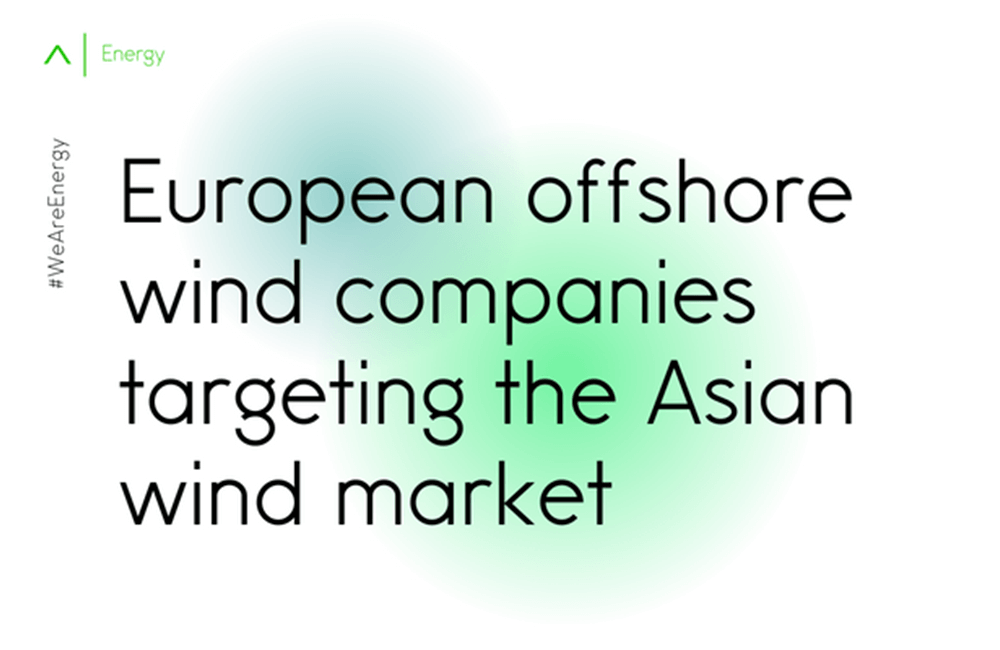European offshore wind companies targeting the Asian wind market
17 Nov, 202210 minsEuropean turbine makers are pushing their way into Asia’s offshore wind market, hoping...

European turbine makers are pushing their way into Asia’s offshore wind market, hoping to solidify themselves in the region, whilst capitalising on having a technological advantage over Chinese competitors.
A number of countries have committed to boosting their share of renewables - including Taiwan, Japan and South Korea - as part of government net zero targets. In light of this, many electronics companies are planning to achieve 100% renewable electricity worldwide by 2050. The likes of TSMC, SK Group and Samsung Electronics are aware of an increased demand for renewables in Asia, and they are making changes accordingly.
In 2019, Asia had five gigawatts of installed offshore wind capabilities, but Europe had 19. However, Asia is expected to go ahead of Europe by the end of the decade, which will see it account for 60% of global offshore wind capacity by 2050.
The South Korean offshore wind industry
South Korea is aiming for 12 gigawatts of offshore wind capacity by 2030, which is a big increase from its current 142.1 megawatts. Most of the existing wind capacity in South Korea has come from government pilot schemes, but the process is difficult for developers, as multiple permits and ministries are involved in the process. As Eunbyeol Jo, a researcher for Solutions For Our Climate, said: “the process needs to be streamlined.” A wind industry executive in Korea explained that the permit process has given a lot of power to local politicians, who have the ability to grant permits in exchange for local employment and the use of locally produced materials. This has increased the price of renewables in South Korea, which has led to a lack of demand.
One thing that could work is foreign turbine makers joining up with local companies, and venturing into the offshore wind market together. Already, Denmark’s Vestas has formed a partnership with Korean wind tower company CS Wind. Similarly, GE Renewable Energy has signed a memorandum of understanding with Hyundai Electric.
South Korea has a lot to offer European offshore wind companies; the waters off the coast of the country are ideal for floating wind towers, and the shipbuilding industry will aid in developing and building the towers quickly.
Taiwan and Japan begin to make a mark on renewables
Taiwan has already started to transform its energy market, and there has been a lot of encouragement about offshore wind projects. There have been three rounds of auctions in the last month in Taiwan, for close to 3GW of site leases. In 2020, TSMC signed a corporate power purchase agreement with Ørsted, which is the world’s current largest renewables deal. This agreement will ensure TSMC all of the 920MW generated by Ørsted’s offshore wind farm named Greater Changhua.
Japan is also making strides within the renewables market, and it’s currently aiming to have 10 gigawatts of offshore wind by 2030. 20% of Japan’s power generation mix is made using renewables, but this is expected to increase to between 36% and 28% by 2030. Japan’s first big auction made headlines when Mitsubishi won all three tenders, but a suspension was quickly put in place to prevent a single player from dominating all of the renewables projects.
The Head of Market Development at Ørsted in Japan explained that the country is an attractive market in Asia, due to its impressive electricity market. The Chinese market is inaccessible to foreign companies, but Japan provides a good alternative.


